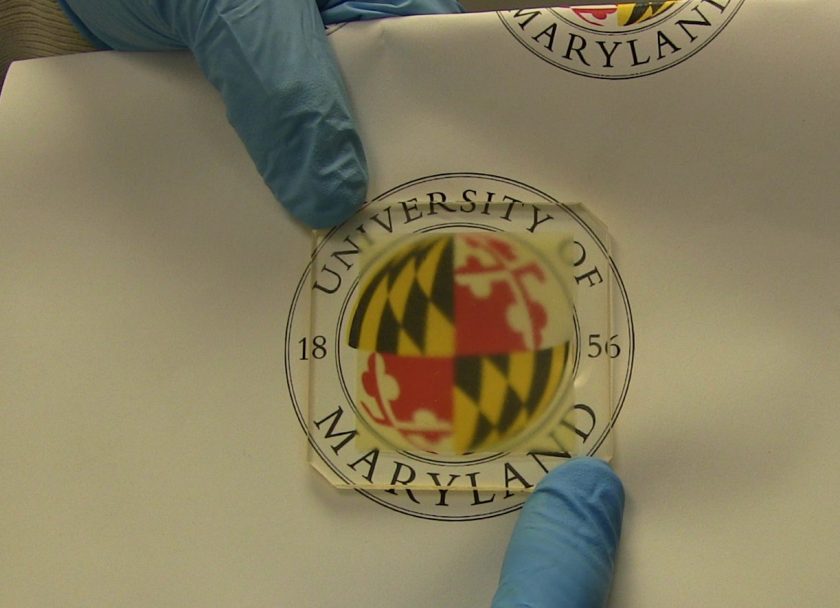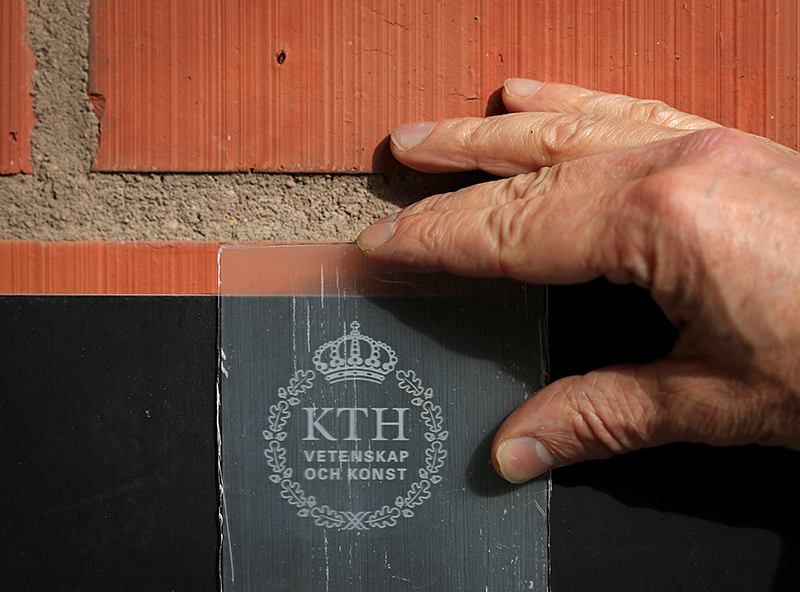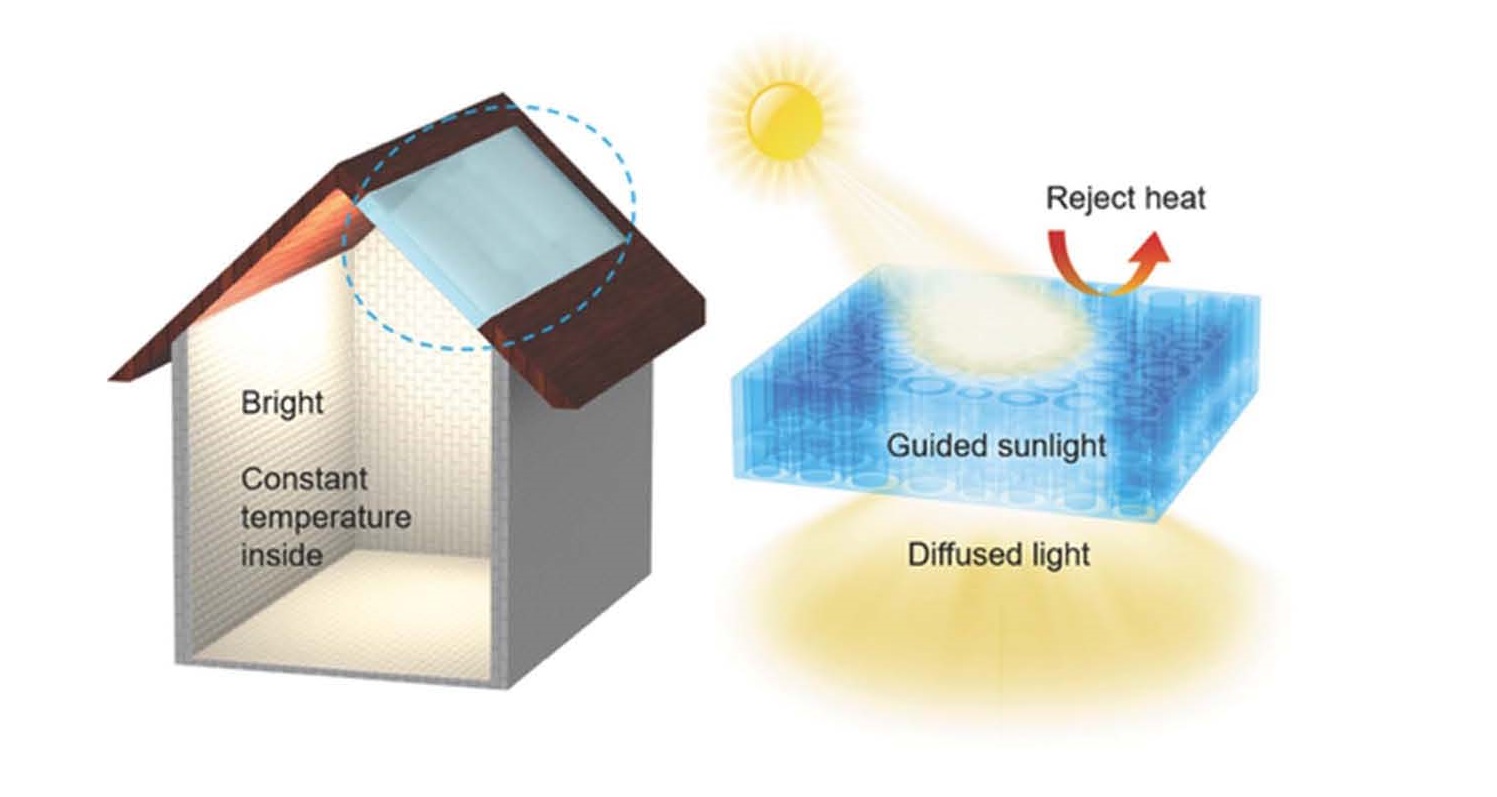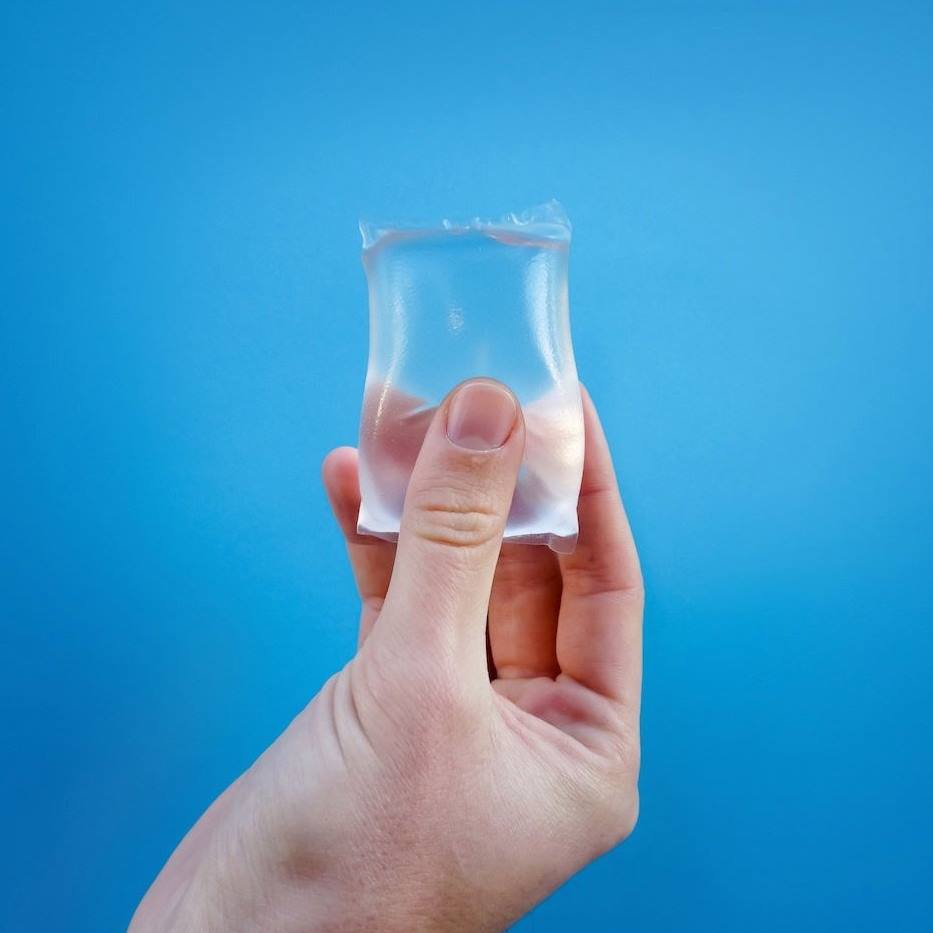
If a group of Swedish and American scientists have their way, being able to “see the forest through the trees” could soon take on a near-literal meaning. Within the last year, separate research teams using parallel methods have both advanced upon an idea that looks as incredible as it sounds: Transparent wood.

Step one was to chemically remove lignin, which both contributes to the yellowish-brown appearance of wood and binds its cells and fibers together (helping give wood its trademark rigidity). When the lignin was pulled out of the wood fibers, the material left behind was milky in appearance—predictably white, but not yet transparent.
That’s where the clear path to clear wood forked: Researchers at Sweden’s KTH Royal Institute of Technology mixed its substrate with prepolymerized methyl methacrylate (PMMA; basically, acrylic glass), while a University of Maryland team injected its bleached wood with epoxy.
Subtracting Opacity, Adding Strength and Versatility
Both research teams arrived at wood with optical properties that made the samples transparent, though not perfectly so: The Swedish team, for example, achieved 85{f716f8da2bc6b8773d14b7ed437079b0125eeaf2794552f16b05c896ce8f16c3} light transmittance. Through their technique, the translucency of the wood can be altered by simply changing the ratio of wood to PMMA.

University of Maryland (UMD) scientists found that in addition to also owning a high haze factor, their epoxy-injected transparent wood became four to six times stronger than the original sample. Though it was missing the lignin that gave it its nature-made strength, the wood was made hardy again as epoxy filled its veins.
UMD’s lead researcher, Liangbing Hu, Ph.D., explained it this way to CNN: “These tiny fibers that form the walls of channels, are what makes wood so robust . . . we don’t disturb these channels—and so for the first time, we can maintain the backbone structure of the wood, and make it transparent, while simultaneously making it stronger.”
Carving Out New Applications
Innovations in transparent wood fibers have been around for a couple of years in nano-size form. University of Wisconsin-Madison researchers, for example, have been exploring how nanofibrillated cellulose from wood waste can be used to make tiny, biodegradable computer chips.
But the 2016 advances spearheaded by the KTH Royal Institute of Technology and UMD teams point toward much larger applications. Think, “house-sized applications.”
For example, the haze factor in transparent wood could make it an ideal candidate for next-gen solar panels. Since light entering transparent wood is captured within the wood’s native veins or “channels,” solar panels made from transparent wood might better collect scattered light.

Transparent wood could also become a substitute for traditional glass windows. UMD’s research team built a mini model home using transparent wood for windows and discovered that it better distributes light, eliminates glare and offers improved thermal insulation. Plus, their inherent strength—and failure to shatter when hit with a baseball by the neighbor’s kid—would allow transparent wood windows be taller and wider than windows made with glass.
Wood also has the advantage of being not only one of the building industry’s most in-demand materials, but also its most renewable.
“Wood is by far the most used bio-based material in buildings,” said Lars Berglund, Ph.D., lead researcher of the Swedish team. “It’s attractive that the material comes from renewable sources. It also offers excellent mechanical properties, including strength, toughness, low density and low thermal conductivity.”
The Innovation, Inspiration & Ideas blog was created to share stories and profiles of companies, products and individuals creating innovation in business through inventive material solutions. For more information on why we launched it, read our blog introduction.
Also in Industry Inspiration:

Using Carbon Dioxide to Make Plastics
in Industry InspirationScientists at Rutgers have developed catalysts that can convert carbon dioxide into plastics, resins, fabrics and more. Since carbon dioxide has been identified as a major cause of… Read More

Edible Water Bottles: the next big thing?
in Industry InspirationEdible water bottles could be in your future thanks to London-based startup Skipping Rocks Lab. Their first product, Ooho, makes you rethink “water on the go.” The idea behind Ooho… Read More
